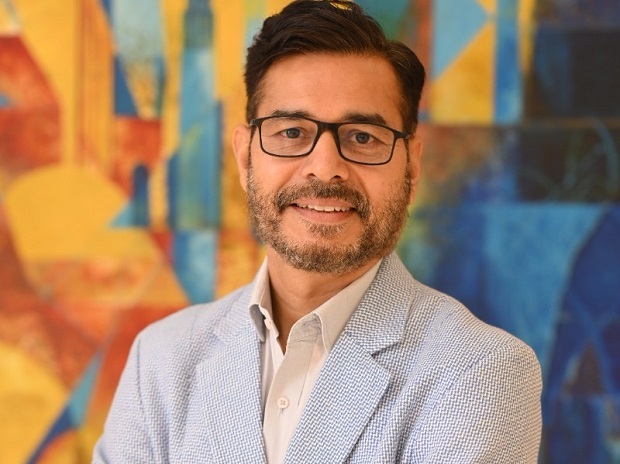Manish Narula is the Executive Vice President of Chinese solar manufacturer–Jinko Solar (South Asia). In an exclusive interview with Saur Energy in Hyderabad, Narula talked about his company’s experiments with newly-started energy storage devices, bifacial solar panels, and the future of these in India. Excerpts:
How has the experience of Jinko Solar been in India till now?
The company started its operations around a decade ago. We started doing business in India in the last 7-8 years. Our journey in India had been exciting. We are growing with a Compound Annual Growth Rate (CAGR) of 30 percent annually. Last year were able to clock around 2GW (Gigawatt) of sales against all odds. We were at No. 1 in the country last year. We hope to carry on the journey with the same position in the market.
Are you planning to diversify your products and increase your footprint in India?
Originally, we were making solar modules with polysilicon. Now we have shifted to mono perc and also bifacial solar panels. This year, we also launched energy storage solutions under the brand name of Jinko. Through this, we are trying to cater to the storage needs of the Indian renewable energy sector.
How do you see the Indian renewable market compared to other countries in South Asia?
If we look at the South Asian countries, India and China are both leaders in solar energy. India is just below China regarding solar installations and at number 3 globally after China and the United States. But India is growing. With its large population and large per capita electricity demand, India’s position in the global clean energy market looks promising. Moreover, with the anticipated growth of other forms of clean energy like Green Hydrogen and Green Ammonia, the renewable energy sector in the country is set to escalate.
With all this background, India is on track to become one of South Asia’s much-sought-after markets. It is likely to pour in more investments in the country’s sector in the coming days. India has skill sets and good solar installations, so there is good potential.
The Indian government is also doing hand-holding support through the PLI Scheme, Make in India, and creating an environment to support manufacturing, ancillary services, and cells and wafer manufacturing in the country. So we are in the right direction.
How has your experience been with your recently-launched energy storage devices in India?
We have ventured into the Energy Storage Systems (ESS) section. We also have an ESS factory in China that is manufacturing it. We pick up different ESS components from different players from China, assemble them in a container, and sell them in India and other regions. We are working on bringing down its costs. The major cost-cutting could be done with the reduction of Lithium costs.
Now in the clean energy sector, around 80 percent demand for batteries comes from EVs, while the solar or wind sector demand stands at approximately 20 percent. With more adoption and innovations, the prices of batteries and energy storage systems will likely decrease. If these prices come down sooner, the discoms and governments are likely to adopt it in a much larger way.
Different renewable players are using custom-free routes in South Asia for better deals. Are you also trying to rope in the services of such countries with whom India has Free Trade Agreements (FTAs)?
We have factories in Vietnam and Malaysia, but our major factories are situated in China. It depends on the allocation and availability of products. If the delivery period is shorter, like three-four months, we have to rely on China due to its vast manufacturing resources. For longer duration deals we can reply on other such countries. If the customers want to avail the benefits under the duty-free route trade from Vietnam and Malaysia under the FTA rules, they can consider this.
The Indian government has extended the period for the Approved Lists of Models and Manufacturers (ALMM). Considering the higher demands, can India extend it further?
It has already been extended recently. With more demands, the government might consider this. It could pave the way for the quick adoption of technologies and solar targets and expedite achieving the net-zero targets.
As you said, you are transforming your products. Bifacial solar modules are also one of the products you are dealing with. Do you think the Indian market is mature enough to imbibe these new technologies?
India generally does not follow any new technology first. Often, it is first taken by the European countries and the countries where they are manufactured now. Bifacial technology provides additional energy production and is suitable for high humid and heat conditions. India is adopting these technologies. It has seen the potential to save on tariffs due to such technologies. We see a 10-15% increase in production. Our developers use this to cater to tariff issues.
Where do you find the best usage of bifacial solar panels in India, and how the Indian government is reacting to the new technology?
This technology works best when there is a good reflection from the surface beneath the solar panels, like the rooftop surface. If it is painted in white, it gives better reflections and suits the technology in producing a bit of extra solar energy. In deserts, grasslands, and red soil, they work well where we see more generation due to higher reflectance from the surface. So some states have more potential for bifacial than others. The government is also adopting the technologies. They have seen the value. The government does not float particular tenders for it. They are not binding to the technology. So, it is for the developers to consider this.

